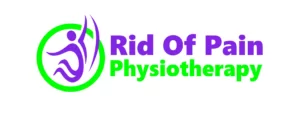Postoperative Therapy
Postoperative care is the care a patient receives after a surgical procedure and it depends on the type of surgery the patient had, as well as his health history. Postoperative therapy includes pain management and wound care. At Rid Of Pain Physiotherapy we provide physiotherapist at home in gurgaon service for postoperative care.
Postoperative therapy begins immediately after the patient underwent surgery and lasts for the duration of the hospital stay and may continue after the patient has been discharged. A physiotherapist should enlighten the patient about the potential side effects and complications of his procedure.

If your looking for physiotherapist at home in gurgaon for postoperative care, Rid of Pain Physiotherapy is the solution for all Physiotherapy related problems
Post-Operative care in the hospital
After the patient’s surgery is complete, the patient will be moved to a recovery room. The patient probably stays there for a couple of hours while the patient wakes up from anaesthesia. The patients feel groggy when he wakes up. Some people also feel nauseated.
While the patient is in the recovery room, staff will monitor his blood pressure, breathing, temperature, and pulse. They may ask the patient to take deep breaths to assess his lung function. They may check the patient surgical site for signs of bleeding or infection and also watch for signs of an allergic reaction. For many types of surgery, the patients will be placed under general anesthesia. Anesthesia may cause an allergic reaction in a few people.
Post-Operative Exercises
- Ankle Range-of-Motion
- Knee Extension
- Straight Leg Raise.
- Knee Flexion–Seated
- Heel Raises
- Hip Abduction
- Hip Extension
Types of Physical Therapy
Stretching
Stretching is essential to regain and maintain the range of motion in joints and the flexibility of muscles after an operation. Stretching helps in reducing pain and swelling.
Strengthening
Strengthening exercises help improve muscle function surrounding the surgical area and throughout the entire body. Strengthening the patient body’s core (midsection) is also key to overall strength and stability while recovering – and to get the patient self-moving again.
Range-of Motion Therapy
Range of motion refers to how broadly and fully the patient can move the affected joint or limb in all possible directions in which it should naturally be able to move. Range-of-motion therapy can include:
- Passive routines, which are performed on the patient’s body by the therapist guiding patient movements
- Routines in which the patient and the PT both do the hard work
- Active routines, where patient perform exercises on patient own
Ultrasound and Electrical Therapy
In these types of therapies, high-frequency sound waves and low electrical currents perform therapeutic actions on deep tissues. This helps to improve blood flow, re-train the nerves in the area, and maximize the overall results of patient surgery.
Benefits of Post-Operative Therapy
A post-operative therapy program containing physiotherapy at home in gurgaon is not just physical therapy. After orthopedic surgery, a solid post-operative program – developed by the patient and patient-doctor, and/or therapist – can empower the patient:
- Establish a patient plan to reach post-surgery goals.
- Understand patient strengths and limitations.
- Re-establish the patient’s ability to take showers and use the bathroom.
- Learn techniques to help patients handle more complicated tasks, including driving and getting to work or school.
- Follow a personalized diet that will help the patients through recovery and beyond.
- Understand and manage patient medications.
- Learn how to properly use patient assistive devices, such as a cane or crutches, if applicable.
RID OF PAIN PHYSIOTHERAPY
BEST PHYSIOTHERAPY CLINIC IN GURGAON- PHYSIOTHERAPY
- OSTEOPATHY
- CHIROPRACTIC
- STRESS HEALING
